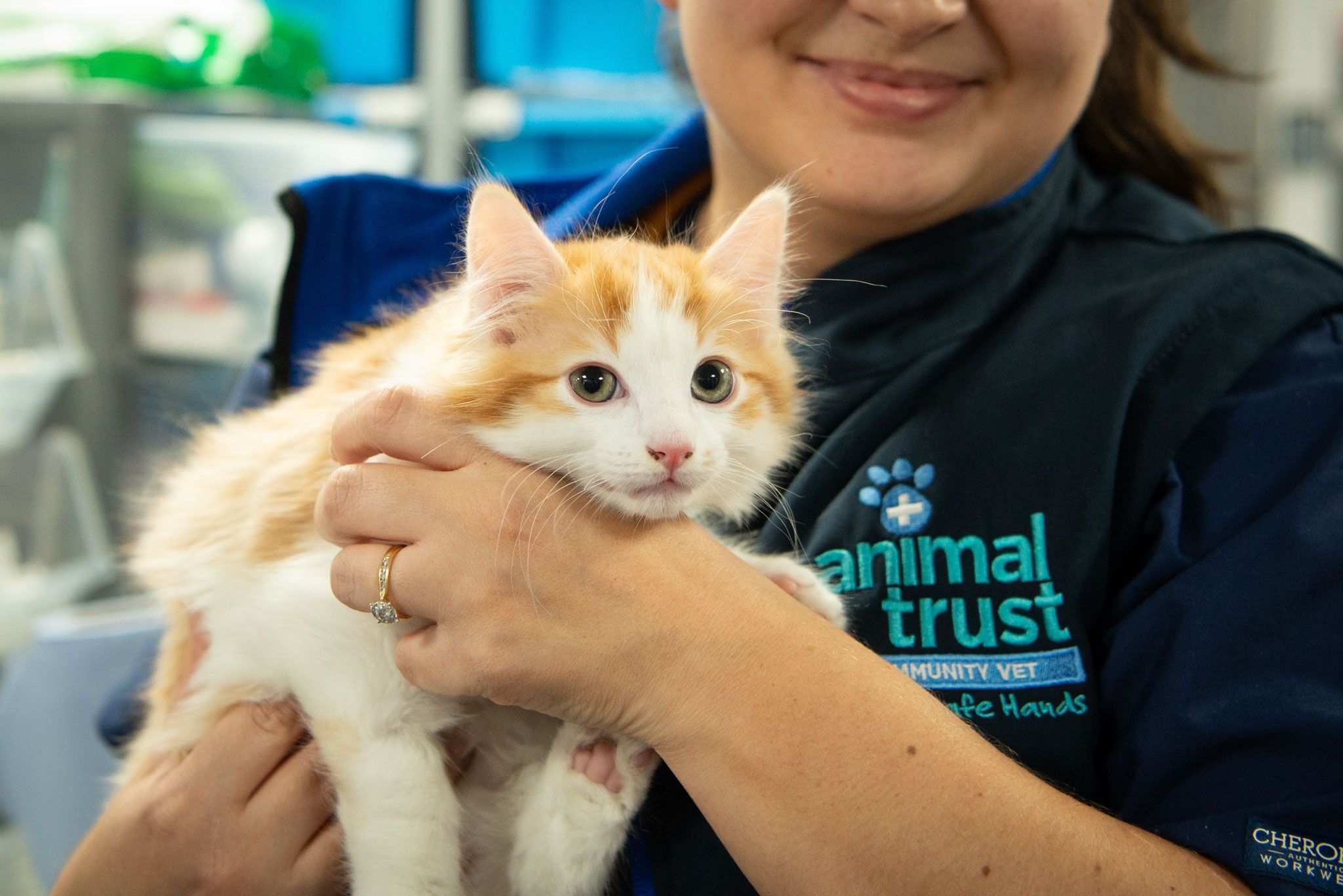
Cat neutering
Read about the benefits of castration and spaying, and what the procedures involves

What is neutering?
Neutering a cat is a surgical procedure that removes specific reproductive organs, preventing the cat from reproducing and reducing breeding-related behaviours. For male cats, the procedure commonly known as castration, while for female cats, it is called spaying. This is one of the most common surgeries in veterinary medicine.

Why have your cat neutered? And when can you have your cat neutered?
Reasons to have your cat neutered
Spaying (for females) or castrating (for males) your cat is essential unless you plan to breed from them. This prevents unwanted kittens and can help avoid severe medical issues such as womb cancer or infections. It also reduces the cat's urge to roam outside, which can lead to car accidents, fights, and injuries. Neutered male cats are also less likely to spray urine to mark their territory.
When to have your cat neutered
The procedure is typically performed when cats are about 5 to 6 months old. However, male cats can be neutered as early as 4 months, especially if they begin spraying in the house.

What will happen when your cat is neutered?
The night before surgery
No food after 7pm
Minimal water until 7am on the day of the surgery
The Procedure
For male cats: whilst the pet is unconscious, a small incision is made in the scrotum over each testicle. The testicles are removed, and the sperm-carrying cords are tied. The incisions usually heal without the need for sutures.
For female cats: whilst the pet is unconscious, an incision is made on the tummy, and the two ovaries are removed. Sometimes the womb is also removed. The incision is then stitched up, often with internal sutures that are not visible on the skin. The procedure can be done on the left flank or midline of the tummy, both of which are safe.
Recovery, home care and check-ups
Male cats
Minimal recovery time is needed.
Bleeding and swelling are minimal.
Use paper litter during healing to prevent litter particles from sticking to the incisions.
Avoid baths until the incisions are fully healed.
Full healing typically takes 7-14 days.
Female cats
Limit activity for the first two weeks to prevent running, jumping, or rough play. This helps avoid wound reopening, bleeding, infection, or bruising.
No bandages or external sutures are usually needed, but if sutures are present, they will be removed in about two weeks.
A recovery collar will be provided to prevent the cat from licking or chewing at the wound, reducing the risk of self-trauma and infection.

Complications of neutering
While serious complications are relatively uncommon, they can occur:
Swelling around the wound – can occur due to bleeding under the skin, excessive activity, or licking the wound.
Wound infection and breakdown – over-licking the wound can cause it to reopen, and exposure to the outside world, especially dirty things like the litter box, can lead to infections.
Haemorrhage – cats may experience mild to severe bleeding during or after surgery. This is rarely fatal unless there is another condition, such a blood clotting problem. Blood loss may happen inside the tummy so you may not see it. This can result in your pet being tired and having pale gums.
Anaesthetic reactions – any cat, regardless of age, can have a life-threatening reaction to the anaesthetic agents. Although modern drugs are much safer, anaesthetic deaths can still happen.


